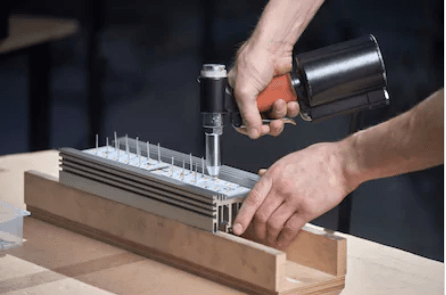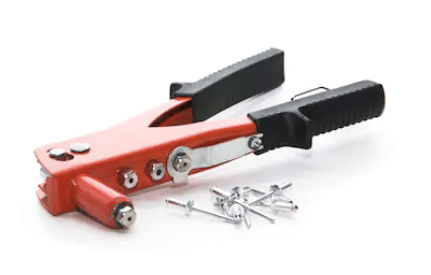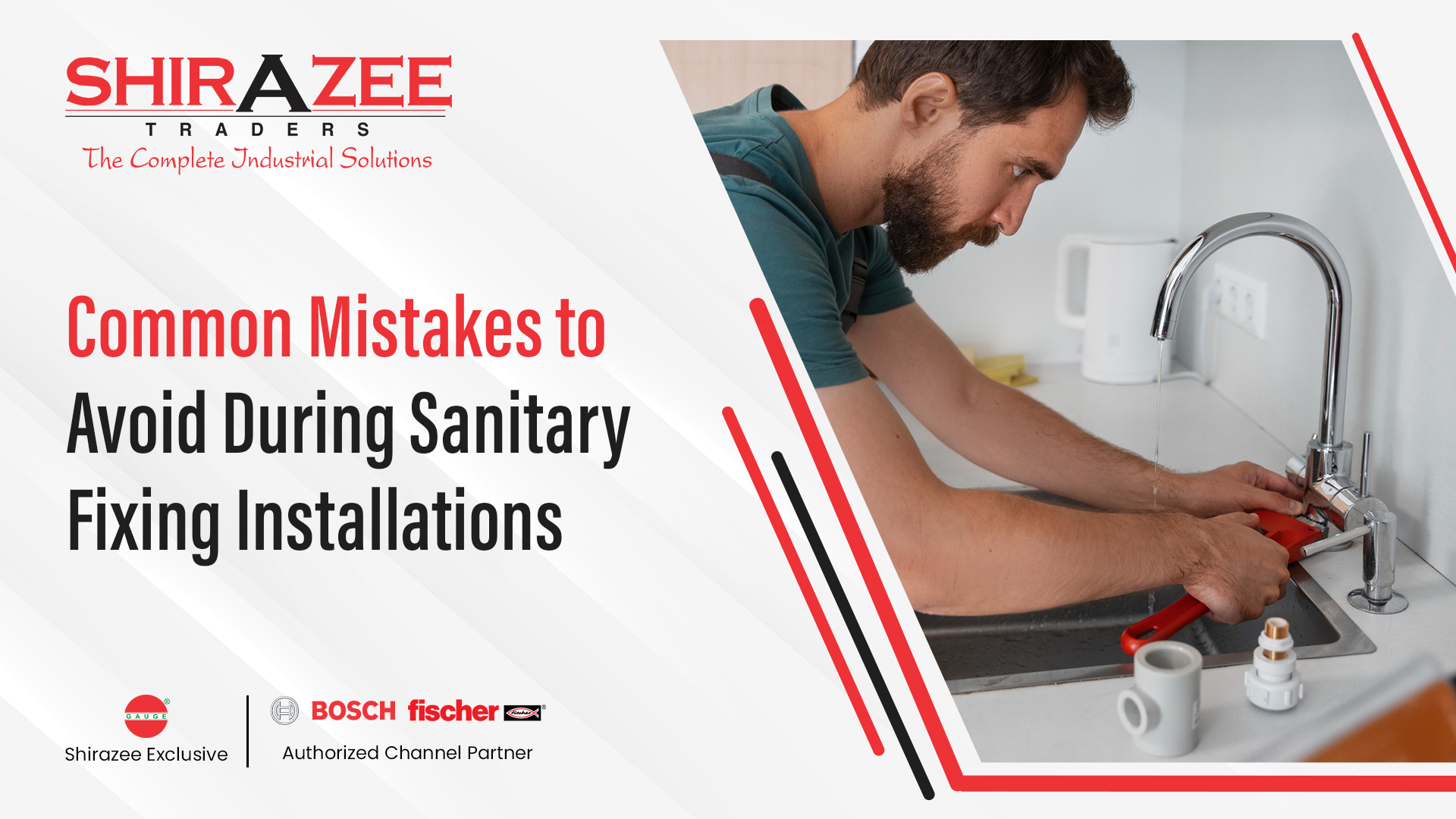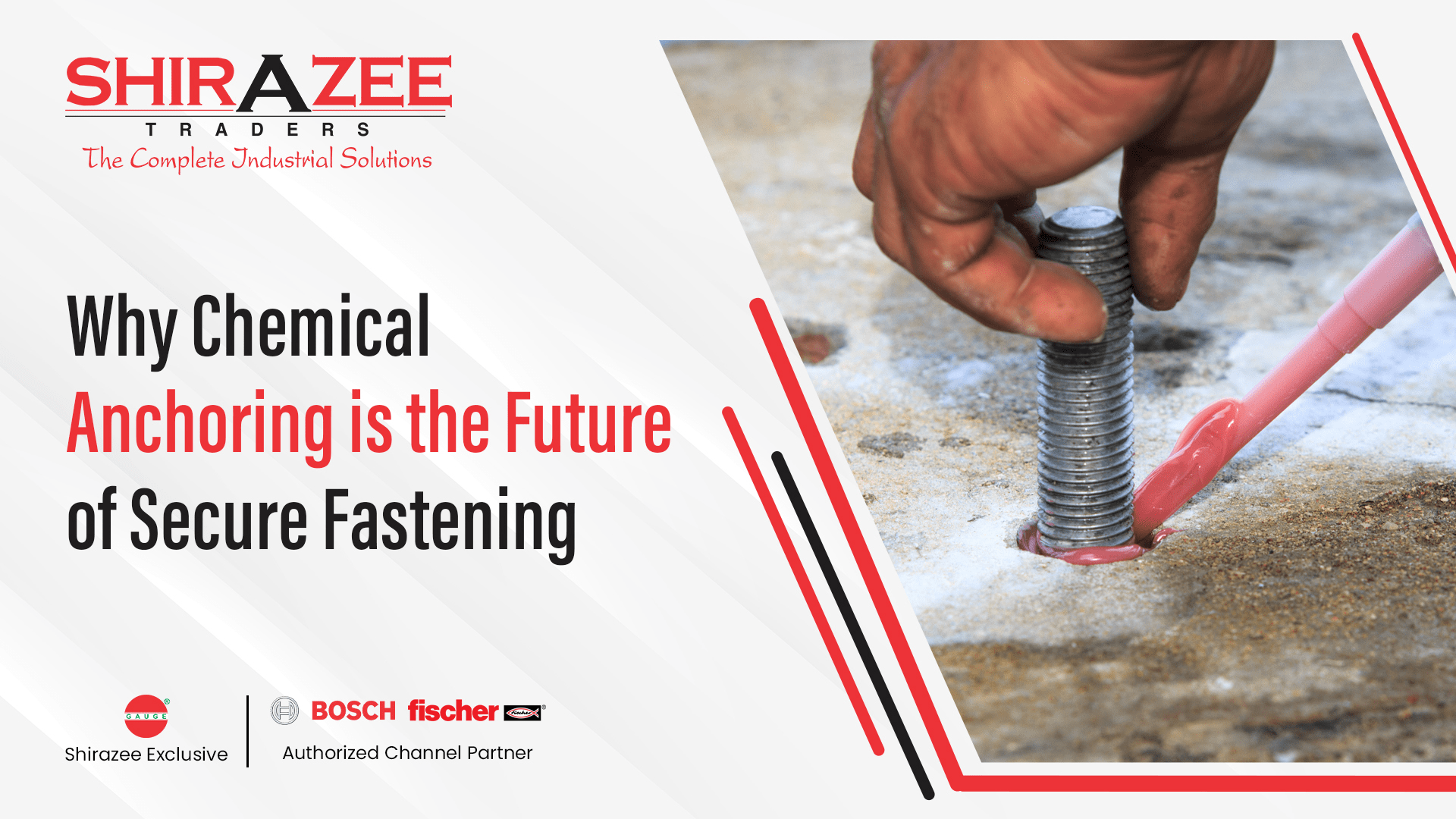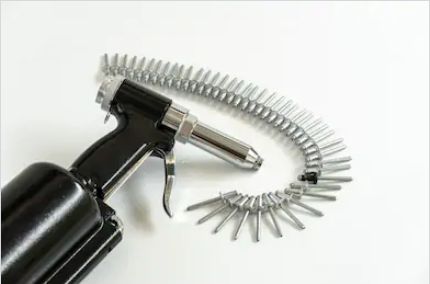
Installing blind rivets is a simple procedure. Prior installing rivets the following things must be taken into consideration.
Materials: The determination of the type of blind rivet is dependent on the material. The softness or hardness of the material can change the rivet type.
Rivet Material: Rivet material is chose on the basis of environmental factors, strength, corrosion resistance and installation materials.
Head type: Appropriate head type should be chosen while installing blind rivets
Rivet Length: Accurate rivet length should be chosen while installing blind rivets as the length of the rivet will change the grip rang.
Rivet Diameter: Determines the size of the hole that needs to be drilled
Grip Range: Grip range is the range of the thickness of the material for proper installation
Installing Blind Rivets
Blind rivets are installed using a riveter aka pop riveter or rivet gun as show below
Step 1: Clamping Material
While clamping the material together, make sure they are aligned in line with each other having no gaps
Step 2: Drilling
Drill bit should be of right size. Drill through the material making a hole for the rivet to go through the clamped material.
Step 3: Placing Rivet
Place the head of the rivet through the hole so that the mandrel is pointing upwards.
Step 4: Placing the riveter
Push the nozzle of the riveter onto the mandrel of the rivet
Step 5: Using the Riveter
Now squeeze the handles of the rivet gun together which will break the mandrel out. This will pull the head into the rivet causing the end of the rivet to expand.
Now the rivet will be permanently fixed holding the materials together.


